Contributed by Sally Kellock
Contributed by Margaret Ann Roth



Contributed by Sally Kellock

Contributed by Margaret Ann Roth







Bennett’s all-natural hair replacement never fit right

Creighton felt it was a relationship; Fudd dismissed it as a shared passion for beet puffs

Jonathan was the tallest boy in third grade, and Lily was the shortest girl

Ordway disliked having large trout sleeping in his guitar case

Eve still felt nostalgic for the Garden
Art and photos by Jane Hart

A pink flame

Rockwood Blaze

Mushroom Bounty

Green Cascades

Parisian Grafitti
Photo by Joe Bruno

White Cliffs of Dover
Photo by Gerry Mahoney

Upstate New York at the end of March
Photo by Jeff O’Donnell
Often a writer’s origin story is buried in the distant past. This week we have the privilege of reading a first work — and an illustrated Kendal critique, to boot. Young Sylvia Horowitz — who just happens to be Carol and Philip Monteleoni’s granddaughter — has written a review of Kendal that is a must-read for all here and beyond. Nonno (that’s Grandpa to all you non-Italians) has provided — in honor of her accomplishment — a non-illustrated version.






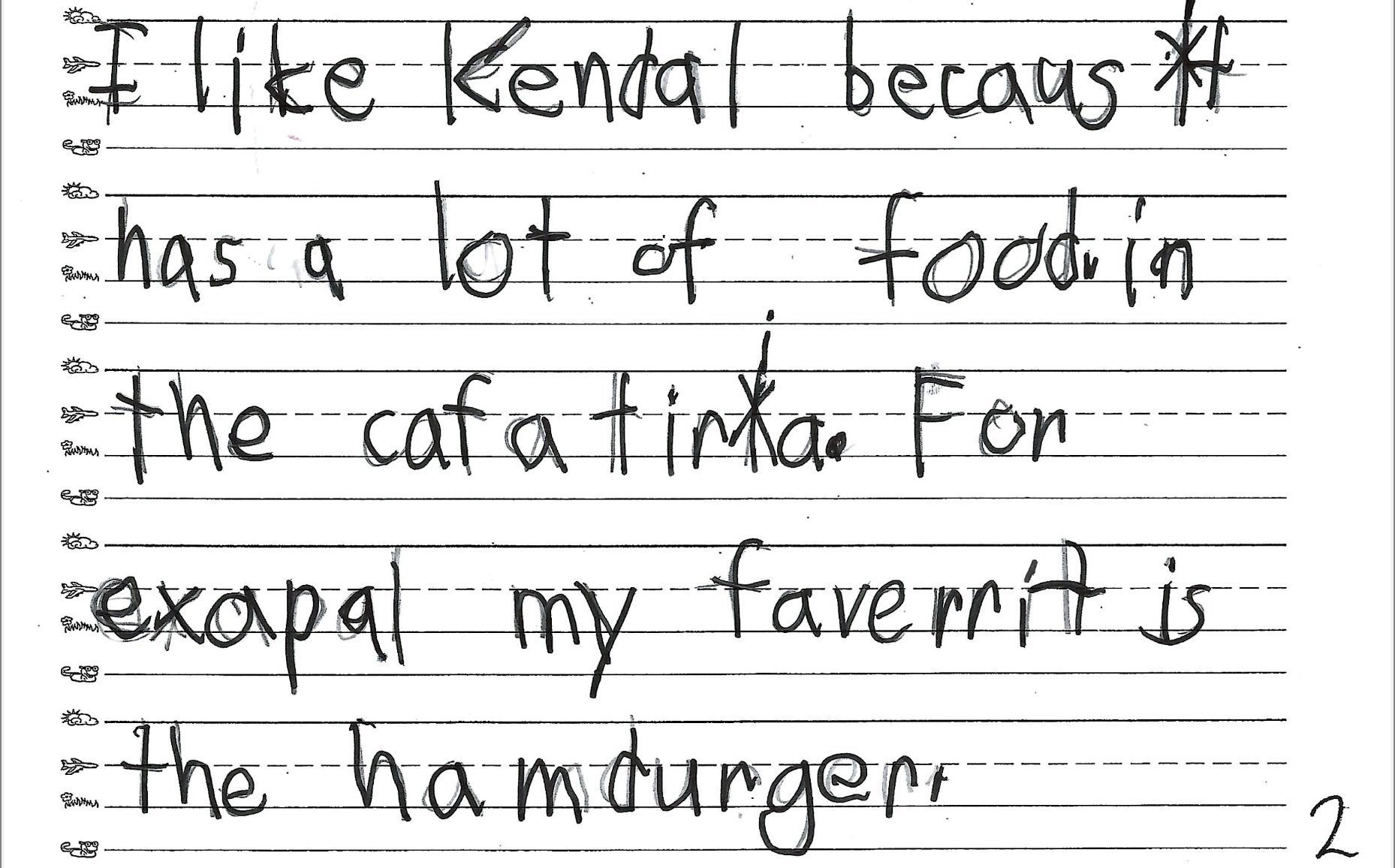




And Nonnon’s Homage:
All about Kendal on Hudson
by Sylvia B. Horowitz [Age 6 and a half, First grade, PS 770, Brooklyn]
Have you heard of Kendal on Hudson? Does one of your family members live there? It is a community for old people. Only old people can live there.
I love Kendal because it has a pool. The pool is not open Sundays. I like the pool because it has a lot of pool toys. For example there are noodles.
I like Kendal because it has a lot of food in the cafeteria. For example my favorite is the hamburger.
Another reason I like it is because it is really fancy. For example they have really cool chandeliers.
And the last reason is there’s a lot of space. I give it ten out of ten stars.
I love Kendal!!!!!!!!!!!!!!!!!!!!!! When you get old you should live there.
You’re going to love it!!!!!!!!!!!!!!!!!!!!!!!!!!!!!!!!!!!!!!!!!!!!!!!!!!!!!!!!!!!!!!!!!!!!!
How Was Velcro Invented?
In 1941, during a walk in the Alps, a Swiss engineer named George Mestral wondered why burdock seeds clung to his clothing and to his dog’s fur. Fourteen years later he succeeded in producing a material equivalent of the structure of these seeds and founded a company to produce it. He named it a portmanteau of two French words: velour (velvet) and crochet (hook).

Text contributed by Norman Sissman
Nursery rhymes, some dating back centuries, have left a strong mark on many of our childhoods, but we often don’t realize where they came from. Some have evolved over centuries, bringing a whole new version to modern children, while others have remained tried and true since their inception. From women’s prisons and peep shows to wholesome tales of beloved pets, here are the origins of some beloved nursery rhymes.

Hickory dickory dock
The mouse went up the clock
The clock struck one
The mouse went down
Hickory dickory dock
Some believe this counting rhyme was inspired by the astronomical clock at Exeter Cathedral in Devon, England, which was plagued by mice. Around 1600, the presiding bishop directed carpenters to cut a hole in the door to the clock room — or, as the records said at the time, “Paid ye carpenters 8d for cutting ye hole in ye north transept door for ye Bishop’s cat.” The cathedral’s cats got easy access to prey, cutting down the vermin population. Centuries later, the door is still there.
But there’s a reason mice were so common around the clockwork: Animal fat was often used to lubricate clock parts during that time. It’s possible it was just written about a pretty normal thing to be happening on a clock at the time, but that’s not as fun.
To Be Continued . . .
Source: Interestingfacts.com
Contributed by Jane Hart






Celebration
as a child
I was unusually tall
I felt very uncomfortable
I had wavy bushy hair
my curls would not become pigtails
I was ashamed of my appearance
I didn’t fit in
I didn’t realize
that I am beautiful
my height makes me look strong and elegant
proud to wear a black leather coat
my hair has lovely waves
now I celebrate
being a strong healthy
beautiful person

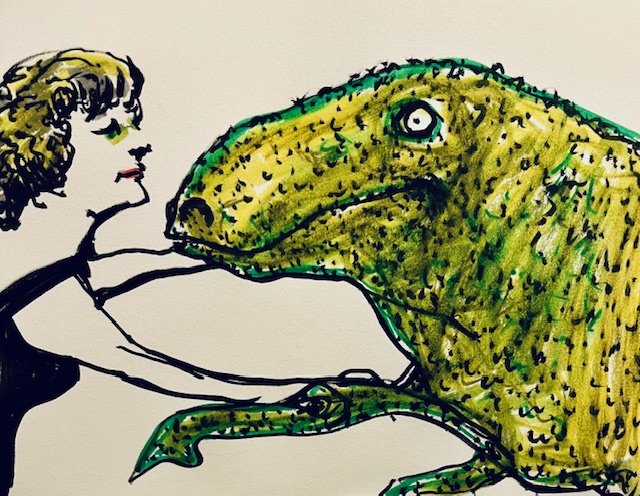
For Mum and Tiny, it was a sweet Mother’s Day

Seamus dreamed of being a carousel horse

Miss Gringe had her sources of information

Selkirk disliked being two-dimensional

Apparently the frog Kiki kissed was not the right one
Art and photos by Jane Hart




Photo by Peter Sibley
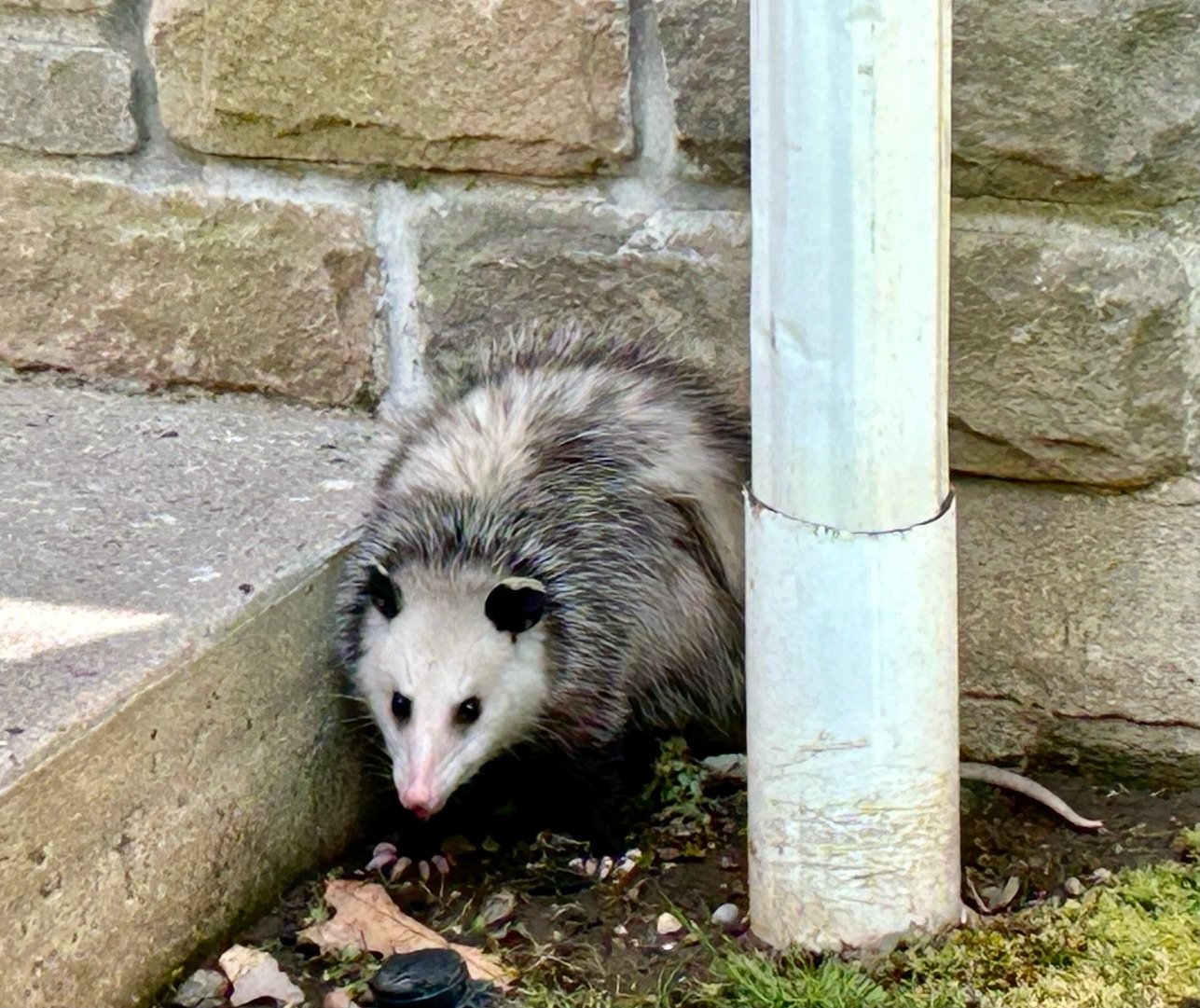
Photo by Carolyn Reiss
Suzanne Sadler notice this friendly visitor to Kendal a couple of times one day. Carolyn Reiss’s Allie was less than welcoming and attempted to chase the opossum away. According to Carolyn, they met nose-to-nose and stared at each other, but Carolyn was able to call off her “fierce beast.” Carolyn did her necessary research and discovered that opossums are unlikely to carry any disease. It will leave on its own, in its usual transient way.
Several years ago, Ursula Hahn went to Trader Joe’s for a bit of shopping. There, she spotted a small phalenopsis orchid and brought it home to Kendal. She and the orchid clearly bonded. The result is a beautiful example of phalenopsis progressus (yes, that is a made-up term by editors of this website), both ethereal and lovely.


Photos by Ursula Hahn







Thrilled you don’t have to cook a meal? Or do the dishes? Or clean up afterwards?
Or take out the garbage?
Or shovel the walk?
Grateful for a sympathetic hand when you are sick?
Just by living at Kendal, you get help of all kinds.

The things that make life at Kendal unique are provided by our staff, those you see and those behind the scenes. Unlike a doorman, or super, or handyman, our staff doesn’t get tips.
That’s why residents get together twice a year to show appreciation to all those who work here.
Remember, back before you came to Kendal: the tips you used to give in dribs and drabs — and how it added up! Now, with one check you can show how happy you are to be cared for by a staff of 200.
We request $250 per person or $500 for a couple. More is always appreciated.
That’s about a dollar a smile.

\
Good morning! Is this the Hospital front desk? I would like to speak to someone regarding one of your patients. I would like to know his state of health, know if he is better or if his problem has gotten worse.
What is the name of the patient?
His name is John Smith, in room 302.
One moment, please. I will connect you with the nurse in charge.
After a long wait: Hello, this is Frances, the nurse in charge, what can I do for you?
I would like to know how the patient John Smith, in room 302, is doing.
One moment. I will try to find the doctor in charge.
After a longer wait: Hello, I am Dr. Jones, the doctor in charge. I’m listening . . .
Hello, Doctor. I would like to know the state of health of patient John Smith, who has been in your hospital for 3 weeks. He’s in room 302.
One moment. I will check the patient’s chart.
After another wait: Hmmm . . . here it is. He ate well today. His blood pressure and pulse are stable. He is responding well to the prescribed medications, and we expect to remove him from the heart monitor tomorrow. If all continues to go well for the next 48 hours, the doctor will sign his discharge for next weekend.
Ahhhhhhh! This is great news. I am overjoyed. Thank you.
By the way you talk, I suppose you are someone very close, a family member, certainly.
No, Doctor. This is John Smith himself calling you from room 302. Everyone comes in and out of my room and tells me nothing. I just wanted to know how I was doing. Thanks a lot.
Contributed by Simone
Nursery rhymes, some dating back centuries, have left a strong mark on many of our childhoods, but we often don’t realize where they came from. Some have evolved over centuries, bringing a whole new version to modern children, while others have remained tried and true since their inception. From women’s prisons and peep shows to wholesome tales of beloved pets, here are the origins of some beloved nursery rhymes.

Humpty Dumpty sat on a wall
Humpty Dumpty had a great fall
All the king’s horses and all the king’s men
Couldn’t put Humpty together again
There’s nothing that makes Humpty an egg in this rhyme! That image was popularized by Lewis Carroll’s Through the Looking-Glass in 1871, decades after the rhyme’s inception. According to the Oxford English Dictionary, “humpty dumpty” had a few meanings before the wall came into it, including a drink with brandy and a short, dumpy, clumsy person. An 1881 book even features images of Humpty as a clown.
A popular theory is that “humpty dumpty” refers to a cannon used during the Siege of Colchester in 1648. The idea that this rhyme is some kind of wartime ballad is pretty common. Before the cannon theory got traction, many believed the rhyme was about the usurpation of Richard III in 1483.
However, according to the Oxford Dictionary of Nursery Rhymes, the root of this nursery rhyme could be more innocent. While it’s unclear whether this game predates the rhyme, Humpty Dumpty was a popular game in the 19th century where girls would tuck their legs into their skirts, fall back, and then try to regain balance without letting go of their skirts. “Eggs do not sit on walls,” authors Peter and Iona Opie write. “But the verse becomes intelligible if it describes human beings who are impersonating eggs.”
Source: Interestingfacts.com
To Be Continued . . .
Contributed by Jane Hart
An elderly but hardy cattleman from Texas once told a young female neighbor that, if she wanted to live a long life, the secret was to sprinkle a pinch of gunpowder on her oatmeal each morning. She did this religiously and lived to the ripe old age of 103. She left behind 14 children, 30 grandchildren, 21 great-grandchildren, and a 40-foot hole where the crematorium used to be.
Contributed by Bob Abramovitz
All those who believe in psychokinesis, raise my hand.
There are 3 kinds of people: those who can count and those who can’t.
If a turtle doesn’t have a shell, is he homeless or naked?
If a parsley farmer is sued, can they garnish his wages?
If the police arrest a mime, do they tell him he has the right to remain silent?
Veni, Vidi, Velcro: I came, I saw, I stuck around.
If you try to fail, but succeed, which have you done?
9 out of 10 doctors say the 10th doctor should mellow out.
99% of lawyers give the rest a bad name.
A pessimist counting his blessings: 10 . . . 9 . . . 8 . . . 7 . . .
Age and knowledge don’t always come together. Sometimes you just get the age . . .
Contributed by Jane Hart

Contributed by Steve Price via Jane Hart

Contributed by Jeff O’Donnell





IThe owners were split: was Dobbin really okay to run in this afternoon’s Derby?

A diet of fireflies and glow worms kept Simon’s utility bills nice and low

Little brother Taunton was thumbs down on Julie Grace’s reptile hairdo

Emmy, the one-eyed shelter cat, felt whole again at the Woodfields’

Crowd control was Marina’s true calling
Photos and art by Jane Hart

Photo by Greg Lozier
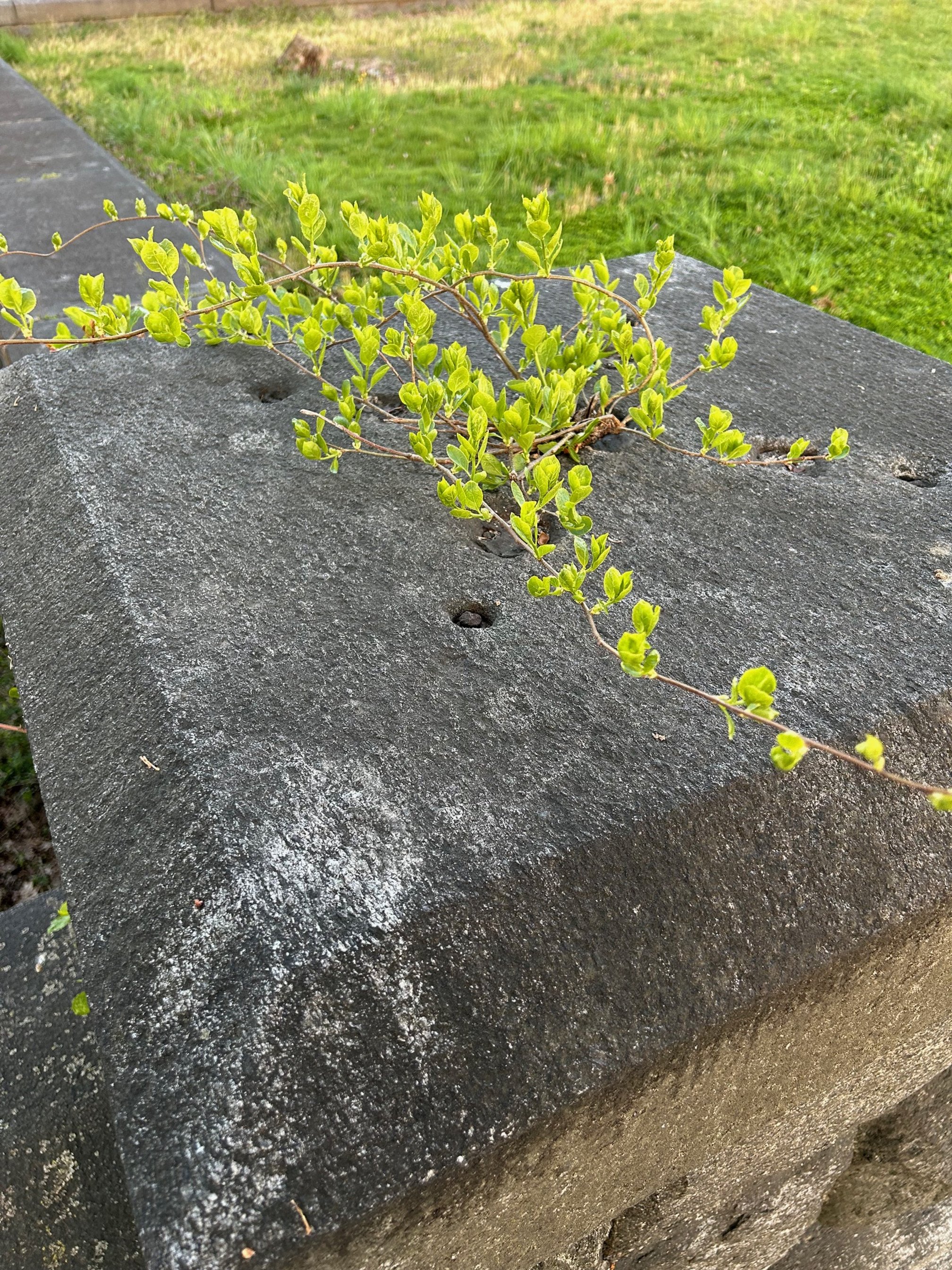
A stone planter

Have you heard: our herd returns!

Photo by Joe Bruno



Photos by Carolyn Reiss

Photo by Joe Bruno
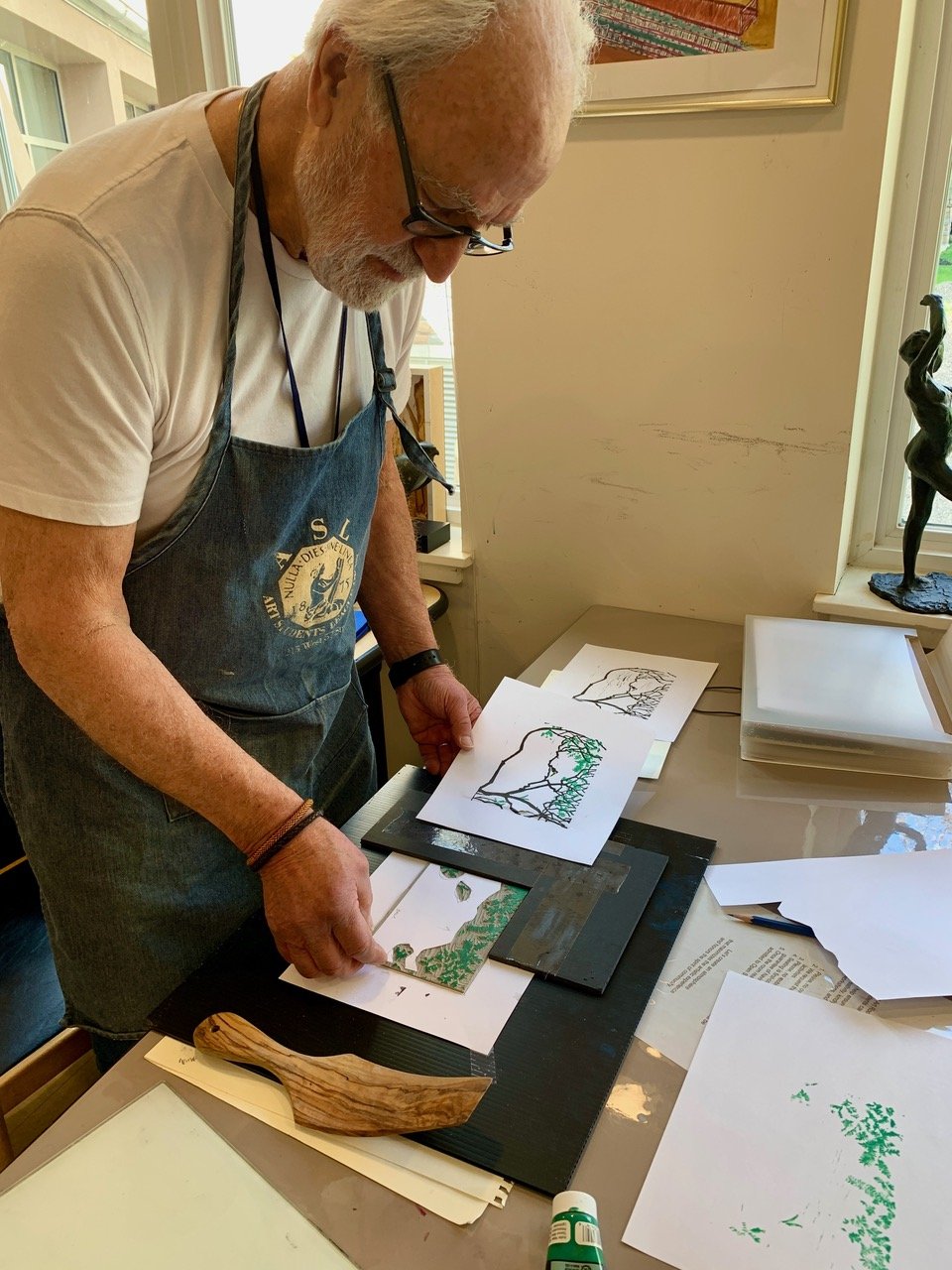
Philip Monteleoni creating a linoleum-block print
Photo by Harry Bloomfeld





And home again — to our own beauty

Photo by Art Brady

Blooming Redbud Tree

Mallards happy to be back at Kendal
Photos by Joe Bruno
© Kendal on Hudson Residents Association 2015, 2016, 2017, 2018, 2019, 2020, 2021, 2022 all rights reserved. Please do not reproduce without permission.
Photographs of life at Kendal on Hudson are by residents.